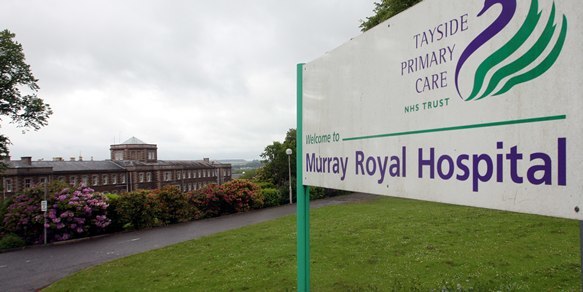The Scottish Government has decided that two listed buildings at Murray Royal Hospital in Perth must stay, to the disappointment of NHS Tayside which had planned to knock them down as part of a £95 million redevelopment.
The hospital will be upgraded along with Stracathro Hospital, near Brechin, but the health authority has been thwarted in its bid to knock down two listed buildings Elcho and Birnam wards as part of its plan for Perth.
NHS Tayside wants to redevelop Murray Royal to have four wards for old-age psychiatry, two new day hospitals and three general adult psychiatry wards, which will provide 56 in-patient beds.
A medium secure care clinic and 68-bed secure accommodation wing will also be created, serving patients from Grampian, Highland, Orkney and Shetland, as well as Tayside.
Construction company Morgan Sindall is building the Tayside Acute Adult Mental Health Developments scheme, with the Perth site pencilled in for completion by mid-2012.
A total of 183 bed spaces will be made at the revamped Murray Royal, with an extra 52 at Stracathro Hospital.
NHS Tayside wanted to demolish the two C-listed buildings as it said knocking them down would enhance the area surrounding a 100-year-old chapel in the grounds.
The health body felt the two buildings would not be of use once the new hospital opens.’No objections’Perth and Kinross Council gave permission for the demolition of the wards in January last year but the application was called in by Scottish ministers for determination in September.
It was agreed that the application should be considered by means of written submissions and a site inspection.
On March 3 this year, a site inspection took place, led by Scottish Government reporter Scott Ferrie.
He reached the decision that the two listed buildings should not be knocked down and his findings have now been backed by Scottish ministers.
It means NHS Tayside may have to alter the plans to include the two listed buildings.
NHS Tayside project director Dave Charles has expressed his disappointment at Mr Ferrie’s recommendations.
He said, “The overall landscape design for the new hospital and particularly the area between the front of the new hospital and the old hospital always envisaged the demolition of these two buildings which NHS Tayside will have no further use for after the new hospital opens.
“These plans were supported by Perth and Kinross Council and the council received no objections from local residents.”Chapel ‘feature’He added, “This decision will adversely impact on the size and design of the civic space around the new hospital main entrance and will leave it facing the backs of these two villas.
“In addition, it had been hoped to reveal the attractive chapel building for the first time in over 100 years and make it a feature of the site.
“NHS Tayside and its partner Taycare will now take advice and consider its options.”
A government spokesperson said, “Perth and Kinross Council was minded to grant consent for the demolition of the two buildings in January 2010.
“Due to an objection by Historic Scotland, the case was notified to Scottish ministers, and the decision was ‘called in’ in September 2010.
“In his report of June 2011, the… reporter recommended refusal, on the basis of Scottish Planning Policy (SPP) and the Scottish Historic Environment Policy and the planning minister upheld this decision to refuse consent to demolish in July this year.”
